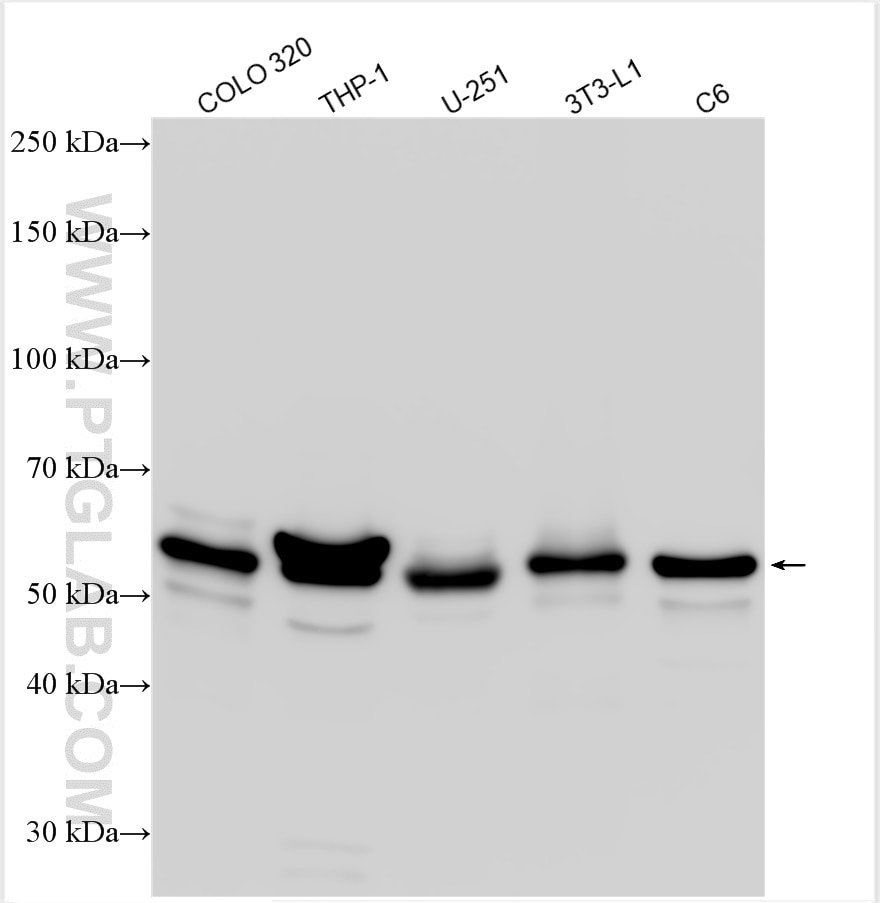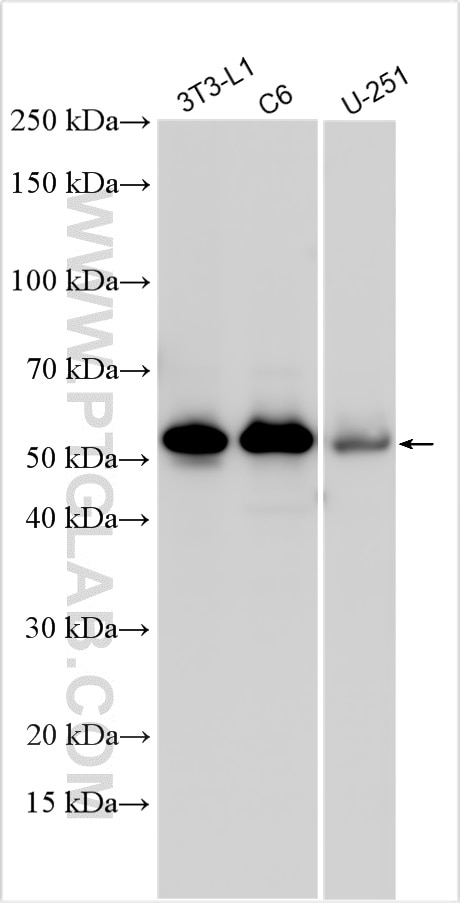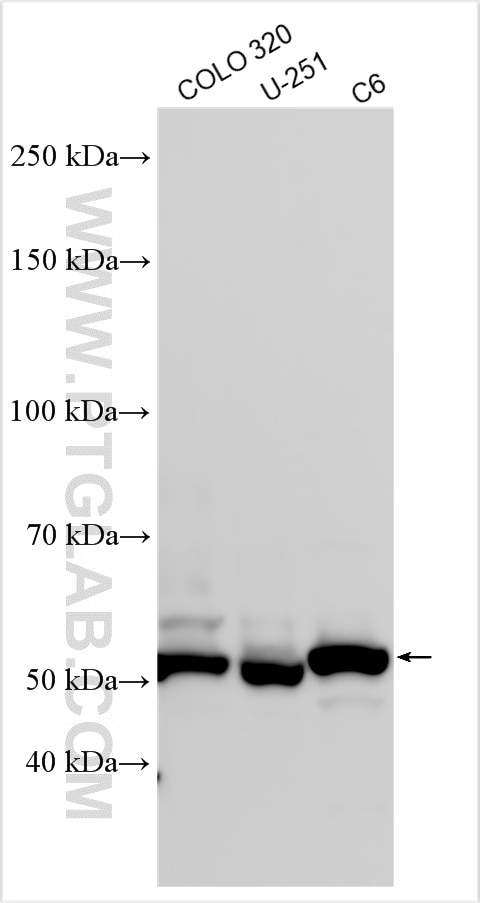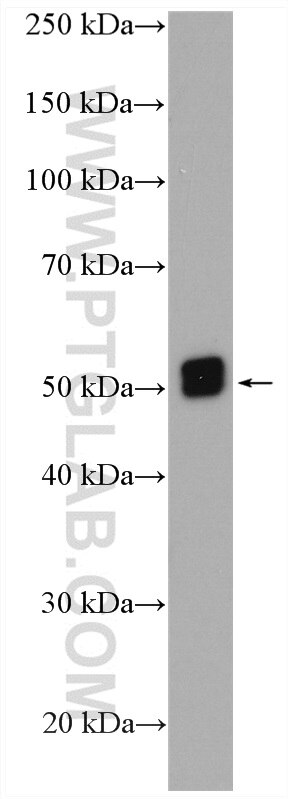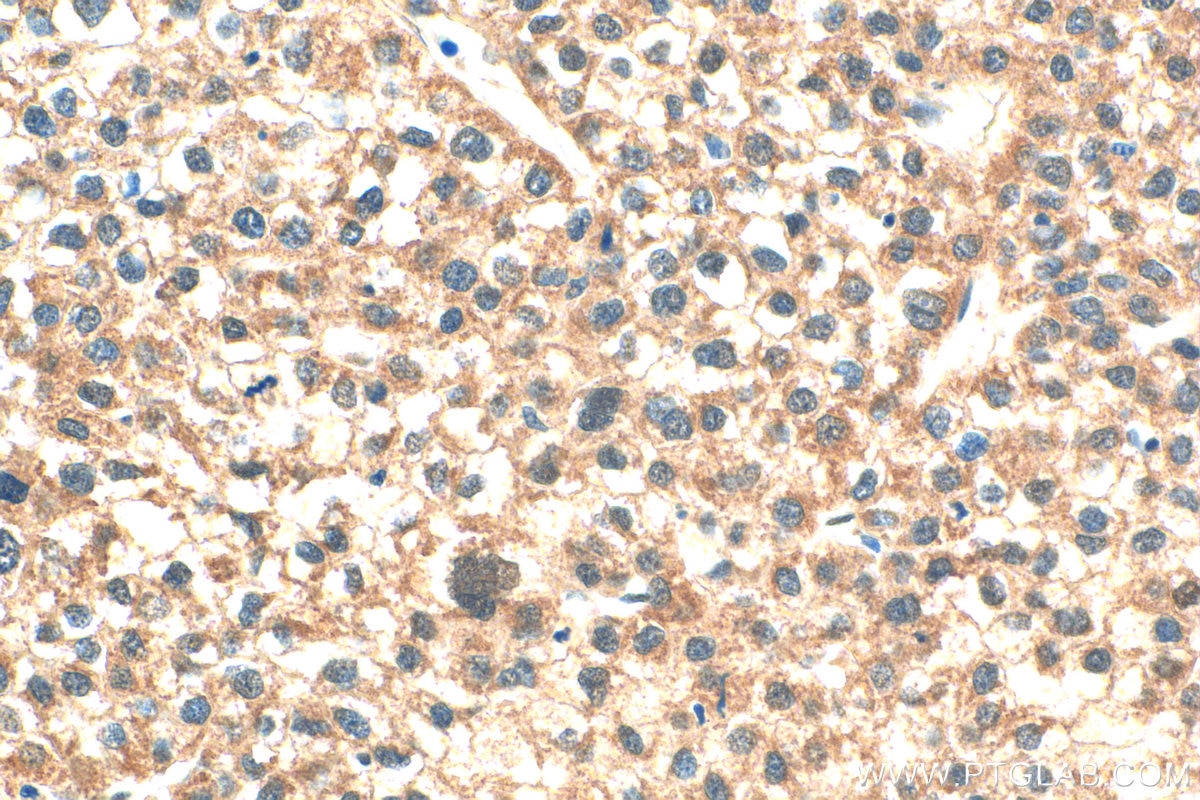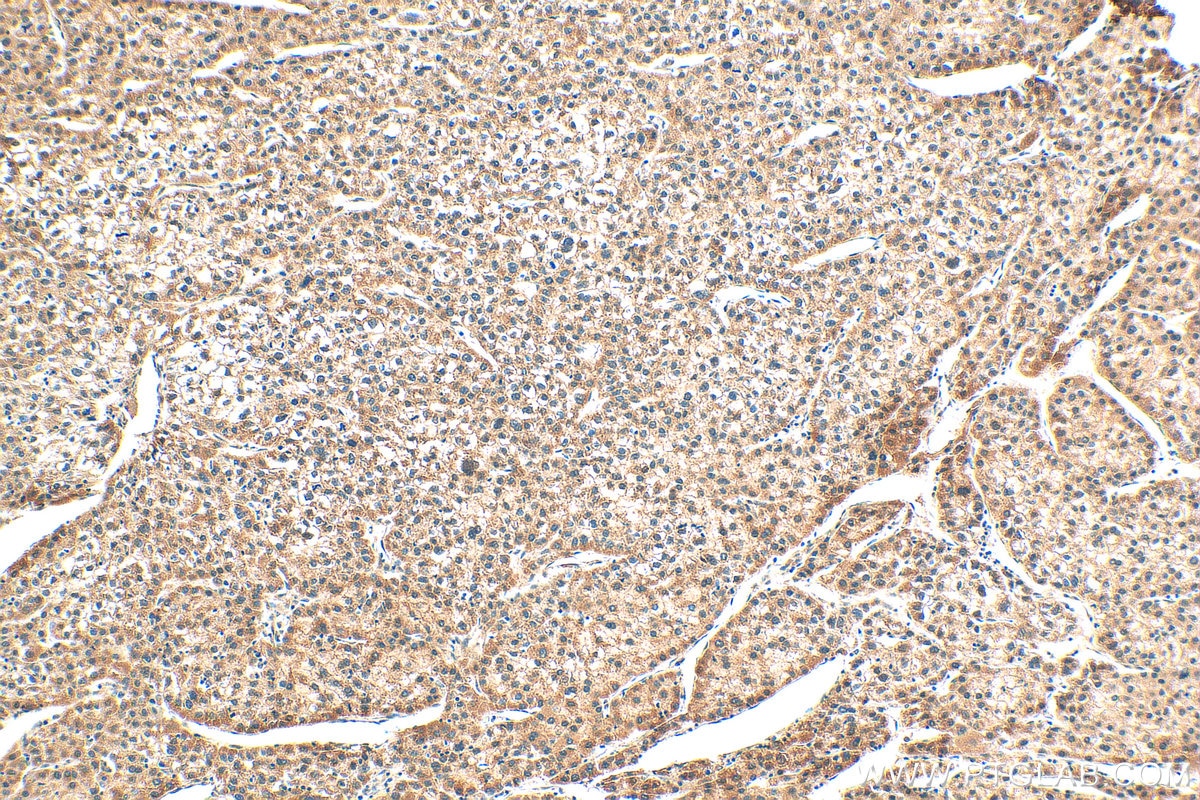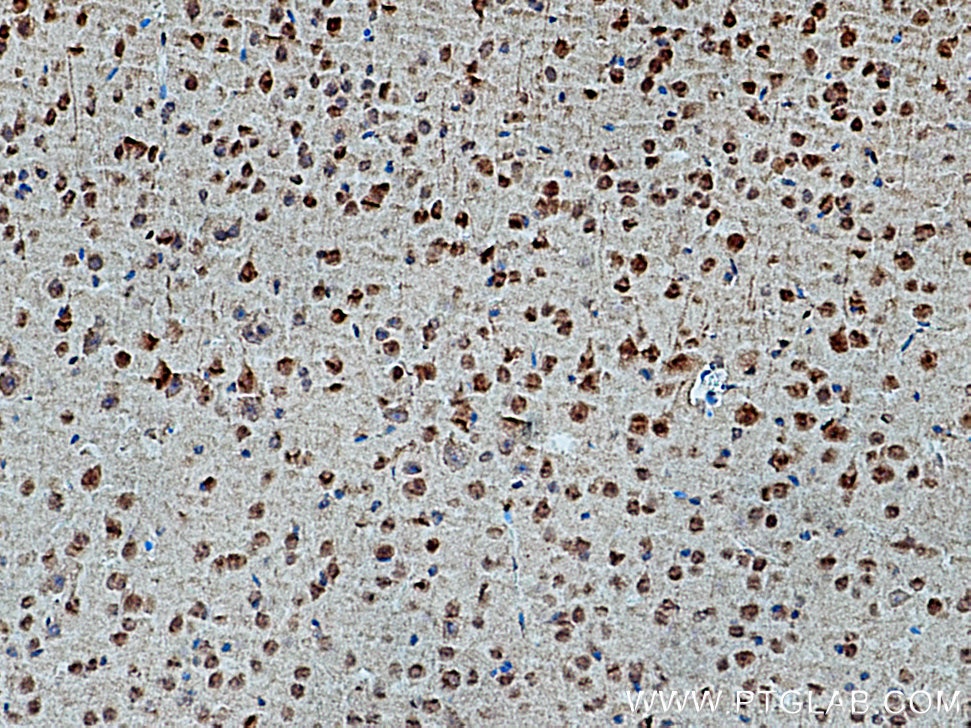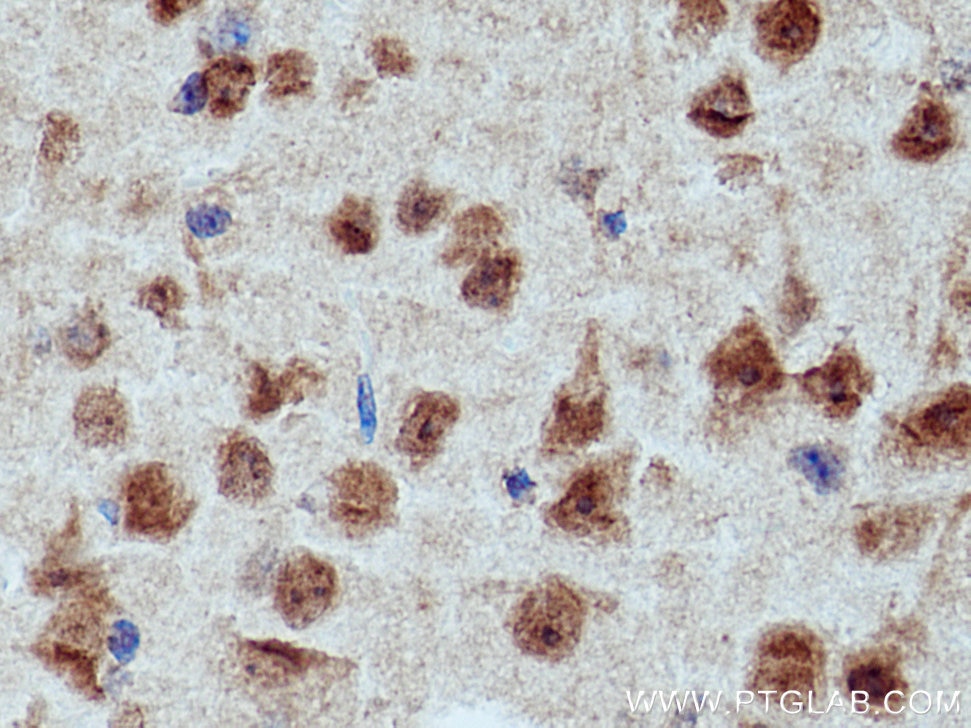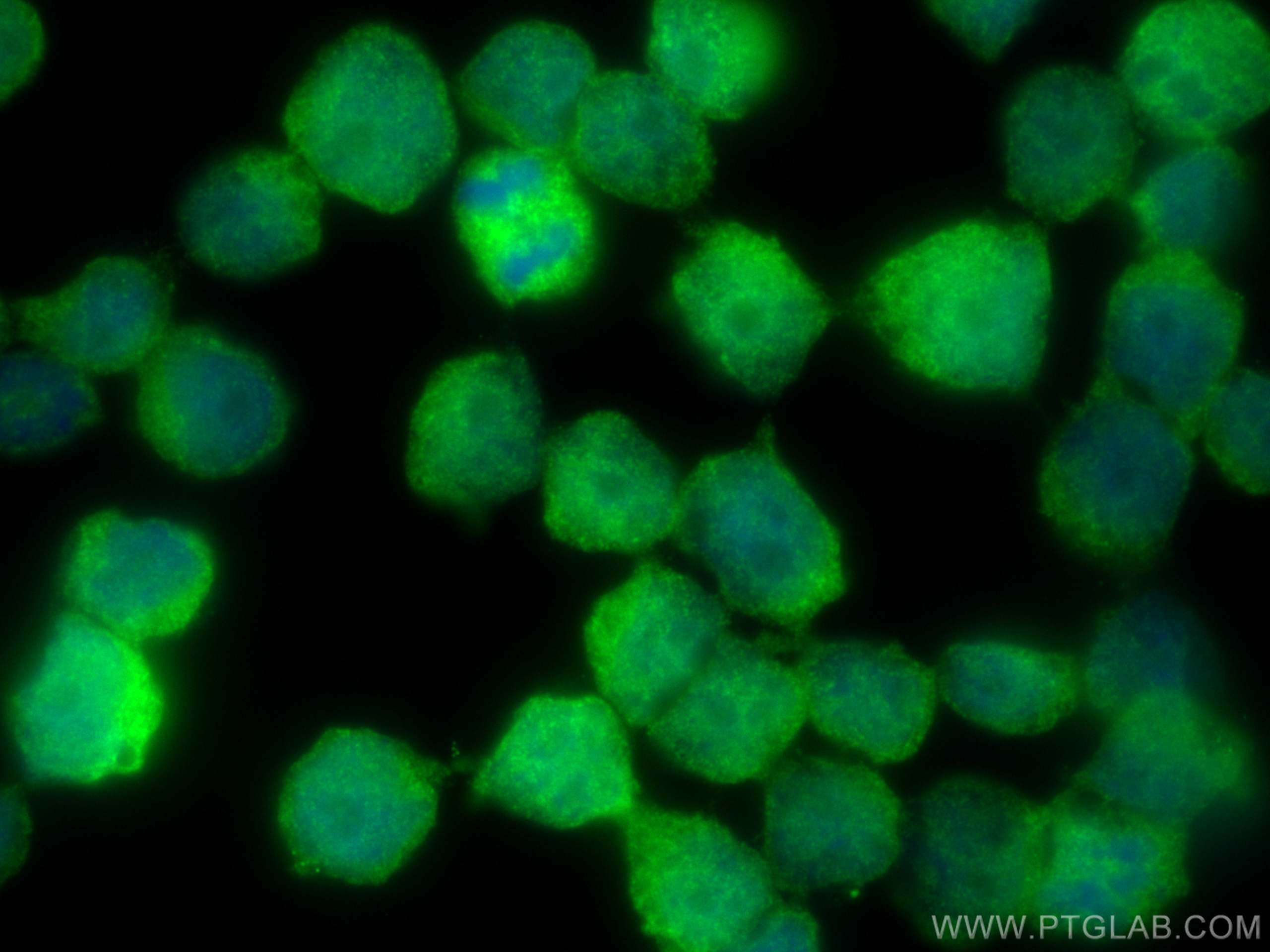- Phare
- Validé par KD/KO
Anticorps Polyclonal de lapin anti-CRBN
CRBN Polyclonal Antibody for WB, IHC, IF/ICC, ELISA
Hôte / Isotype
Lapin / IgG
Réactivité testée
Humain, rat, souris
Applications
WB, IHC, IF/ICC, IP, ELISA
Conjugaison
Non conjugué
N° de cat : 28494-1-AP
Synonymes
Galerie de données de validation
Applications testées
| Résultats positifs en WB | cellules COLO 320, cellules 3T3-L1, cellules C6, cellules THP-1, cellules U-251, tissu hépatique de souris |
| Résultats positifs en IHC | tissu cérébral de souris, tissu de cancer du foie humain il est suggéré de démasquer l'antigène avec un tampon de TE buffer pH 9.0; (*) À défaut, 'le démasquage de l'antigène peut être 'effectué avec un tampon citrate pH 6,0. |
| Résultats positifs en IF/ICC | cellules COLO 320, |
Dilution recommandée
| Application | Dilution |
|---|---|
| Western Blot (WB) | WB : 1:1000-1:6000 |
| Immunohistochimie (IHC) | IHC : 1:50-1:500 |
| Immunofluorescence (IF)/ICC | IF/ICC : 1:50-1:500 |
| It is recommended that this reagent should be titrated in each testing system to obtain optimal results. | |
| Sample-dependent, check data in validation data gallery | |
Applications publiées
| KD/KO | See 2 publications below |
| WB | See 7 publications below |
| IHC | See 1 publications below |
| IF | See 1 publications below |
| IP | See 3 publications below |
Informations sur le produit
28494-1-AP cible CRBN dans les applications de WB, IHC, IF/ICC, IP, ELISA et montre une réactivité avec des échantillons Humain, rat, souris
| Réactivité | Humain, rat, souris |
| Réactivité citée | Humain, souris |
| Hôte / Isotype | Lapin / IgG |
| Clonalité | Polyclonal |
| Type | Anticorps |
| Immunogène | CRBN Protéine recombinante Ag29353 |
| Nom complet | cereblon |
| Masse moléculaire calculée | 442 aa, 51 kDa |
| Poids moléculaire observé | 51 kDa |
| Numéro d’acquisition GenBank | BC017419 |
| Symbole du gène | CRBN |
| Identification du gène (NCBI) | 51185 |
| Conjugaison | Non conjugué |
| Forme | Liquide |
| Méthode de purification | Purification par affinité contre l'antigène |
| Tampon de stockage | PBS with 0.02% sodium azide and 50% glycerol |
| Conditions de stockage | Stocker à -20°C. Stable pendant un an après l'expédition. L'aliquotage n'est pas nécessaire pour le stockage à -20oC Les 20ul contiennent 0,1% de BSA. |
Informations générales
CRBN plays an important role in assembly and surface expression of functional BK(Ca) channels. The mutation of human cereblon gene (CRBN) is related with mild mental retardation, and causes ARNSID (nonsyndromal intellectual disability) by distubing the developmental regulation of BK(Ca) in brain regions that are critical for memory and learning. CRBN is also identified as important thalidomide-binding protein for limb outgrowth in zebrafish and chicks. It can be detected a band above 51 kDa (maybe 55 kDa) in HT22 cells(PMID: 21232561).
Protocole
| Product Specific Protocols | |
|---|---|
| WB protocol for CRBN antibody 28494-1-AP | Download protocol |
| IHC protocol for CRBN antibody 28494-1-AP | Download protocol |
| IF protocol for CRBN antibody 28494-1-AP | Download protocol |
| Standard Protocols | |
|---|---|
| Click here to view our Standard Protocols |
Publications
| Species | Application | Title |
|---|---|---|
Leukemia Phase 2 study of oral thalidomide-cyclophosphamide-dexamethasone for recurrent/refractory adult Langerhans cell histiocytosis. | ||
Hum Mol Genet Cereblon suppresses the formation of pathogenic protein aggregates in a p62-dependent manner.
| ||
J Med Chem Discovery of Novel Proteolysis-Targeting Chimera Molecules as Degraders of Programmed Cell Death-Ligand 1 for Breast Cancer Therapy
| ||
Cell Death Discov Arginine methylation-dependent TRIM47 stability mediated by CARM1 promotes the metastasis of hepatocellular carcinoma | ||
Acta Pharm Sin B Discovery of a potent PROTAC degrader for RNA demethylase FTO as antileukemic therapy | ||
Bioorg Chem Discovery of novel 20S proteasome subunit β5 PROTAC degraders as potential therapeutics for pharyngeal carcinoma and Bortezomib-resistant multiple myeloma |
Avis
The reviews below have been submitted by verified Proteintech customers who received an incentive for providing their feedback.
FH Angie (Verified Customer) (07-06-2023) | The antibody detected a band around 50 kD at dilution of 1:6000 incubated at room temperature for 1 hour followed by secondary antibody donkey-anti-rabbit (Alexa Fluor 800) at 1:20000 dilution, incubated 1 hour at room temperature.
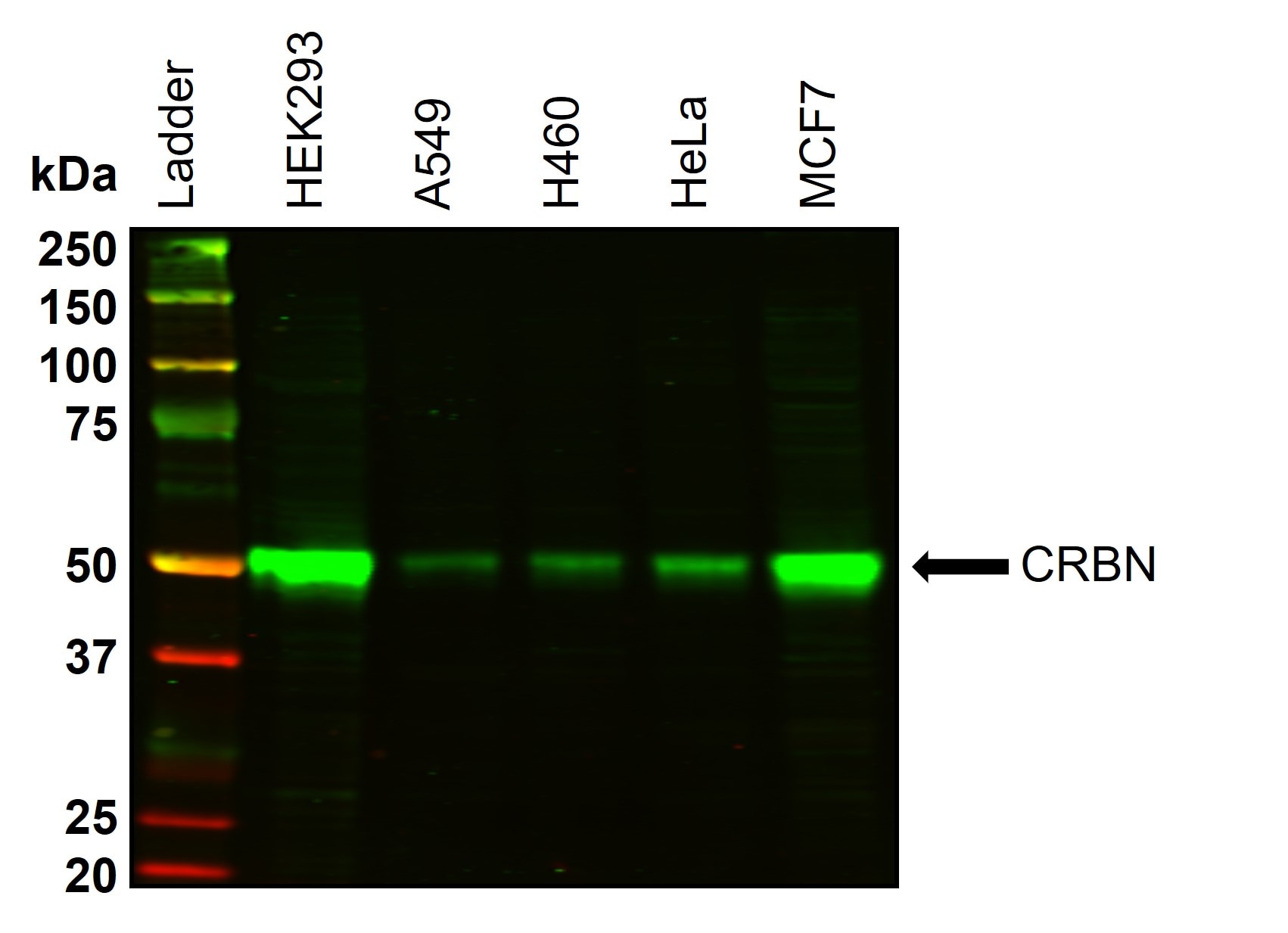 |
